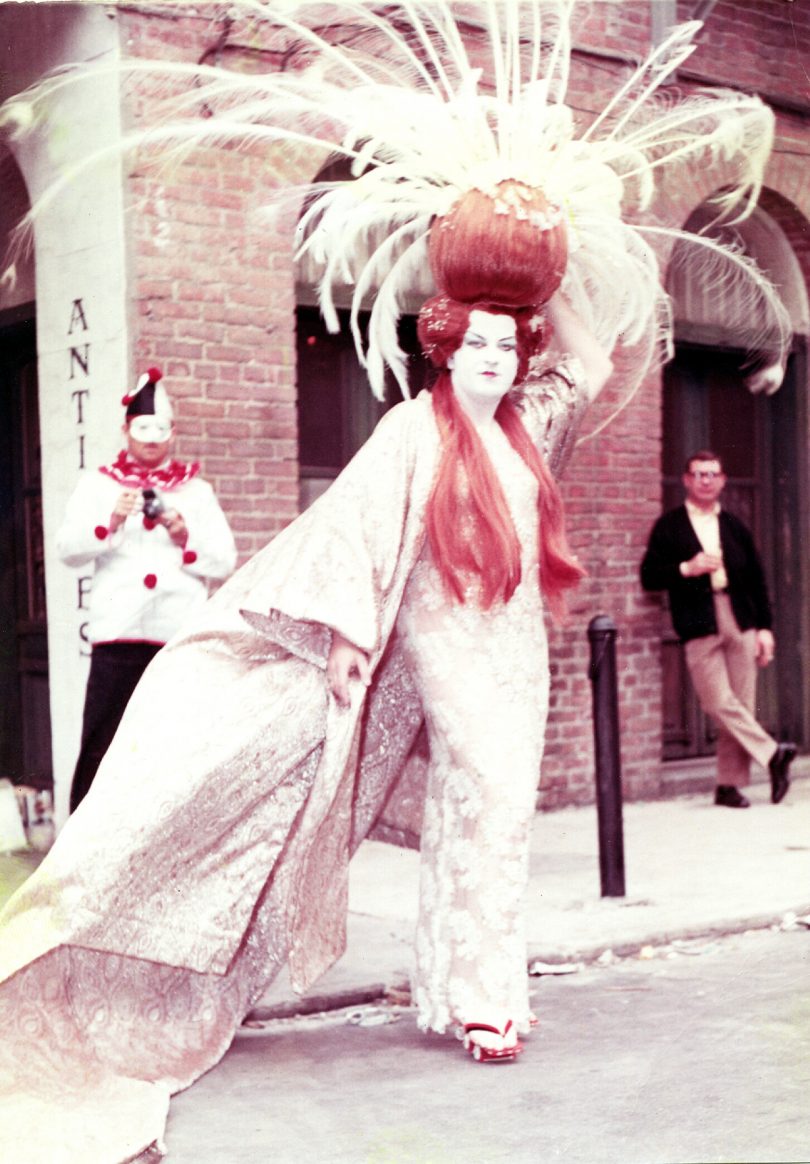June is Pride, a month-long celebration of LGBTQIA+ identities. In addition to parties, parades and concerts, the city will host a first-of-its kind exhibition called Grand Illusions: The History and Artistry of Gay Carnival in New Orleans.
Housed at the Louisiana State Museum’s Presbytère (751 Chartres Street), the Gay Carnival exhibit opens on June 6 and its opening reception will serve as the official kick-off party to New Orleans Pride.
According to organizers, “gay krewes began forming in the late 1950s, simultaneously mimicking and mocking the presentations of pretend royalty but also adding their own modifications. By necessity, they presented their balls in secret, fearing police harassment and imprisonment. Men appearing publicly in female costume (i.e. “drag”) were still subject to criminal prosecution at the time except on Mardi Gras, the only day of the year when it was legal to cross-dress in public.”
Gay balls were an underground phenomenon but flourished in the 1970s. A decade later, the city could count 13 active gay krewes, but the HIV/AIDS epidemic of the 1980s led to the dissolution of all but four, which continue today (Petronius, Amon-Ra, Armeinius, and Lords of Leather). The exhibit’s name, Grand Illusions, is inspired by the Krewe of Armeinius’ 1976 ball theme, An Evening of Grand Illusions.
The collection of over 200 hundred artifacts in the exhibit include posters, original costume designs, rare works of art never before seen in a museum, ball favors, ball invitations, historic photographs, original store and bar signs, and a dozen colorful costumes, both from the Louisiana State Museum’s permanent collection as well as on loan, says a press release. Clips from gay balls of bygone eras will also be shown.
The June 6 opening reception is free and runs from 5 to 8 p.m. Hosted by Friends of the Cabildo, the reception will feature a specialty cocktail called “The Grand Illusion” provided and served by Absolut Vodka.
Grand Illusions: The History and Artistry of Gay Carnival in New Orleans will be on display in the Presbytère until December 2020.





